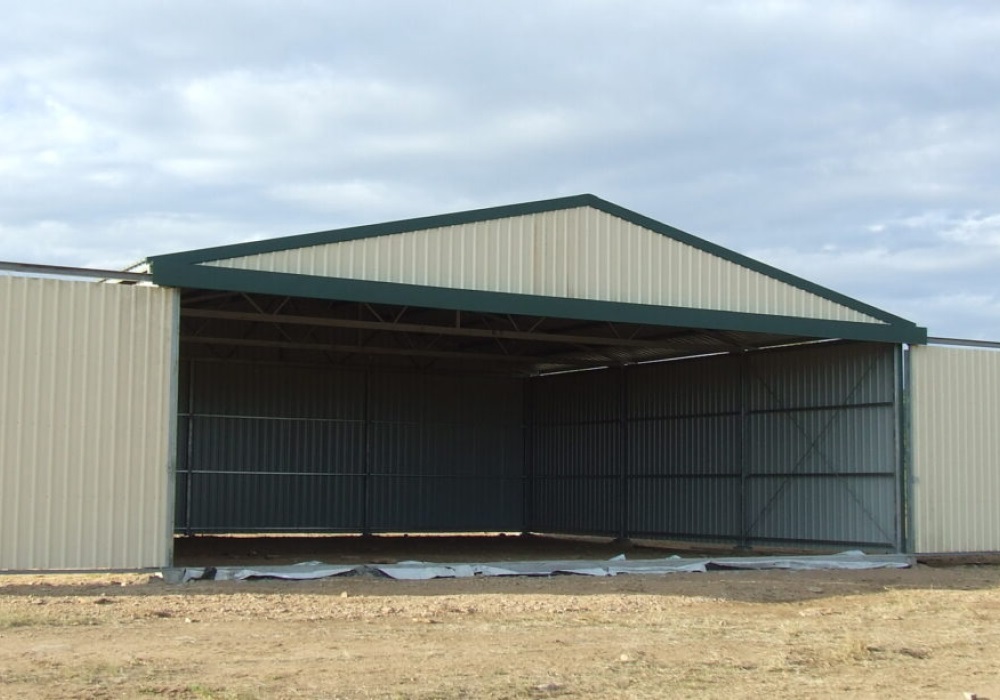
Fully Qualified Builder

3-6 Weeks of Delivery Time

Fully Customisable Roof

Guaranteed All Parts Delivered Undamaged
Farm Sheds
High Quality Livestock Sheds
Ensure your valuable livestock are safe, secure and protected from the elements.
At Shed Barn, our company offers top-notch solutions for all your livestock sheds needs. Our sheds are designed to provide a safe and comfortable environment for your animals, ensuring their well-being and productivity.
With a Lysaght 20-year warranty, our products are built using only 100% Australian-made steel, ensuring strength and longevity. With 22 colour options and custom pitched roofing, you can choose the size, style, and features that best fit your requirements.
We also provide free access to 3D shed builder and professional installation services to ensure a seamless experience. To learn more, speak to a shed specialist and get your obligation-free quote today!
What Are the Best Types of Livestock Sheds?
The best types in Australia depend on various factors such as the type of livestock, climate conditions, and individual requirements. However, here are a few popular options:
Australian Made Steel: They offer excellent durability, strength, and protection against harsh weather. They can be customised to accommodate different livestock sizes and provide ample ventilation.
Open-Sided Sheds: They offer protection from the sun and rain while allowing for natural ventilation. They are ideal for livestock that can tolerate outdoor conditions but still need shelter.
Modular Sheds: They are pre-built structures that offer flexibility and easy customisation. They can be expanded or reconfigured as the livestock operation grows or changes.
Find out more about our Custom Shed options
Looking for more premium farm shed options?

How Much Do Livestock Sheds Cost?
The cost in Australia can vary widely depending on several factors such as the size, materials used, design complexity, additional features, and location. On average, a basic livestock shed can range from a $10,000 to tens of thousands of dollars.
Smaller options or open-sided structures designed for a few animals can be more affordable, while larger and more intricate designs with advanced features will generally have higher price tags. Factors such as insulation, flooring, feeding and watering systems, ventilation, and electrical installations can also impact the cost.
Livestock Shed Benefits
The cost in Australia can vary widely depending on several factors such as the size, materials used, design complexity, additional features, and location. On average, a basic livestock shed can range from a $10,000 to tens of thousands of dollars.
Smaller options or open-sided structures designed for a few animals can be more affordable, while larger and more intricate designs with advanced features will generally have higher price tags. Factors such as insulation, flooring, feeding and watering systems, ventilation, and electrical installations can also impact the cost.
| ✔ Protection from Weather
They provide shelter from extreme weather conditions such as heatwaves, heavy rain, wind, and snow. This helps to keep the animals comfortable, reduce stress, and minimize the risk of health issues. |
✔ Enhanced Animal Health
They allow for better control of the animal environment, reducing the exposure to parasites, diseases, and predators. Proper ventilation and temperature regulation promote healthier livestock. |
✔ 100% Australian Made Steel
All our products are designed to withstand the harsh Australian climate. With a durable, weather-resistant Australian steel you can trust your shed to stand up to heavy use over time. |
| ✔ Flexibility and Customisation
With 22 colour options available, they can be designed and customised to suit specific animal requirements, such as separating different groups, creating calving or lambing pens, or providing specialized areas for feed storage and equipment. |
✔ Custom Pitched Roofing
They can be adjusted to suit any requirements, especially if you want the roof to match your existing building. |
✔ Compliance with Regulations
They can help farmers comply with local regulations regarding animal welfare and environmental standards, ensuring ethical and sustainable farming practices. |














